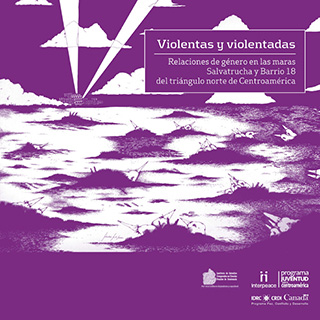Central America: Addressing the factors contributing to female participation in gangs

The Interpeace Regional Office for Central America released the report " Violent Women and Violence Against Women" (in Spanish) as the culmination of a study that examines the experiences with violence and subordination that are common to women who are both members of gangs and who are associated with gangs as girlfriends, wives, or family members of gang members. The research is heavily based on interviews with gang members that were conducted by Interpeace in El Salvador, Guatemala and Honduras over the course of three years, and it provides an in-depth exploration of gender relations in the Central American gangs and offers policy and funding recommendations for addressing the underlying factors that contribute to the desire of certain women to associate with gangs.
Developing policy recommendations
The recommendations address an array of socio-economic factors that contribute to the societal marginalization of women in poor, high crime areas. Drawing on the issues raised by the female interviewees who have had firsthand experience with the gang culture, the recommendations include establishing ways to intervene in abusive households, developing programmes targeted with raising the self-esteem, sense of community, and employment of women, and providing support networks for women who want to leave gangs.
Female participation in gangs
In the interviews with female gang members, many of the women stated that fleeing an abusive family life and the desire to seek protection, resources, and identity were the primary motivators for pursing gang membership. Due to the hesitancy among gangs of allowing women to join the traditionally male dominated sphere, women often face stricter requirements for membership than men and face harsher initiation processes.
In addition to the traditional role of women in gangs as care givers, women have become more immersed in the criminal activities of gangs through being used to safeguard weapons, obtain information, carry out surveillance tasks and follow victims for kidnappings. These tasks utilize women's physical attractiveness and widespread perceptions of female innocence to subdue suspicions of both victims and police officials.
Control through violence
While male dominance is prevalent throughout Central American society, the reproduction of the patriarchal model is exaggerated in the gang culture where men exert their dominance through physical, psychological, and sexual violence against women as well as through strict control over decision-making and using violence to enforce double standards.
The research findings show that violence is the mechanism through which masculine power is legitimized and hierarchical relations are established. Women's experiences in the gangs are therefore characterized by violence and domination by their male counterparts. For the most part, women accept the male dominance, which serves to perpetuate their subordination. Violence against women, although magnified in gangs, is widespread in the society as a whole. As one female gang member stated, "It would be lovely to see something good happen to women, but not just in the gangs, because if you go with a policeman, he wants sexual favors; it's the same in prison and nearly everywhere else."
Empowering the vulnerable
The research concludes that in the system of patriarchal domination, women gang members are both perpetrators due to their involvement and victims of systematic violence, reflecting the general societal environment as well as the desire to join a gang that is promoted by marginalization and vulnerability. A social researcher concluded, "They [women] have a lot of aspirations, enthusiasm, dedication, broken dreams and a lot of potential, but they are prisoners inside a structure of control that prevents them from moving around freely."
Through providing an in-depth analysis of the factors surrounding the decision of women to get involved with gang life, the research provides inclusive and holistic mechanisms for assisting the women who are most vulnerable and providing these women with the means of breaking free from the cycle of violence and insecurity.
The full report (in Spanish) can be downloaded here.
